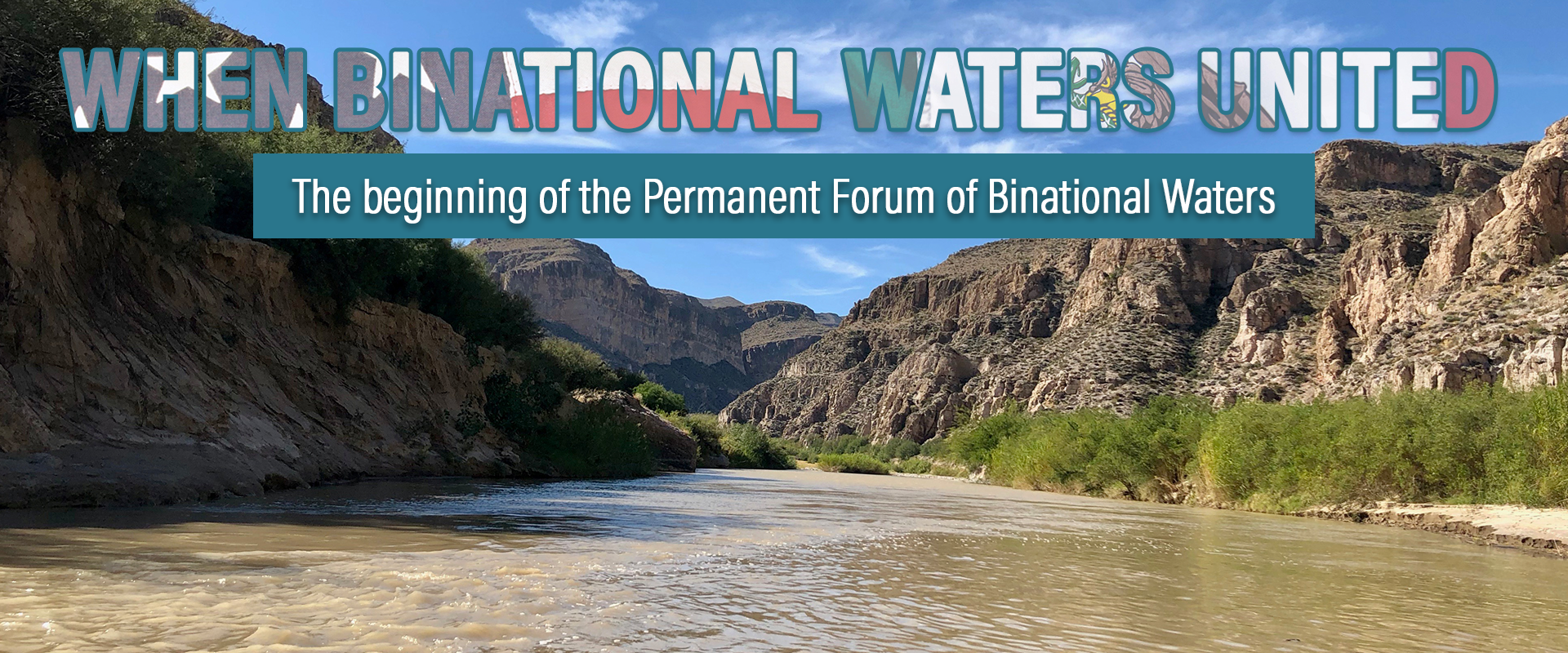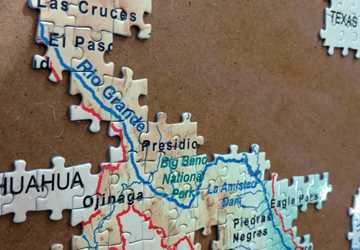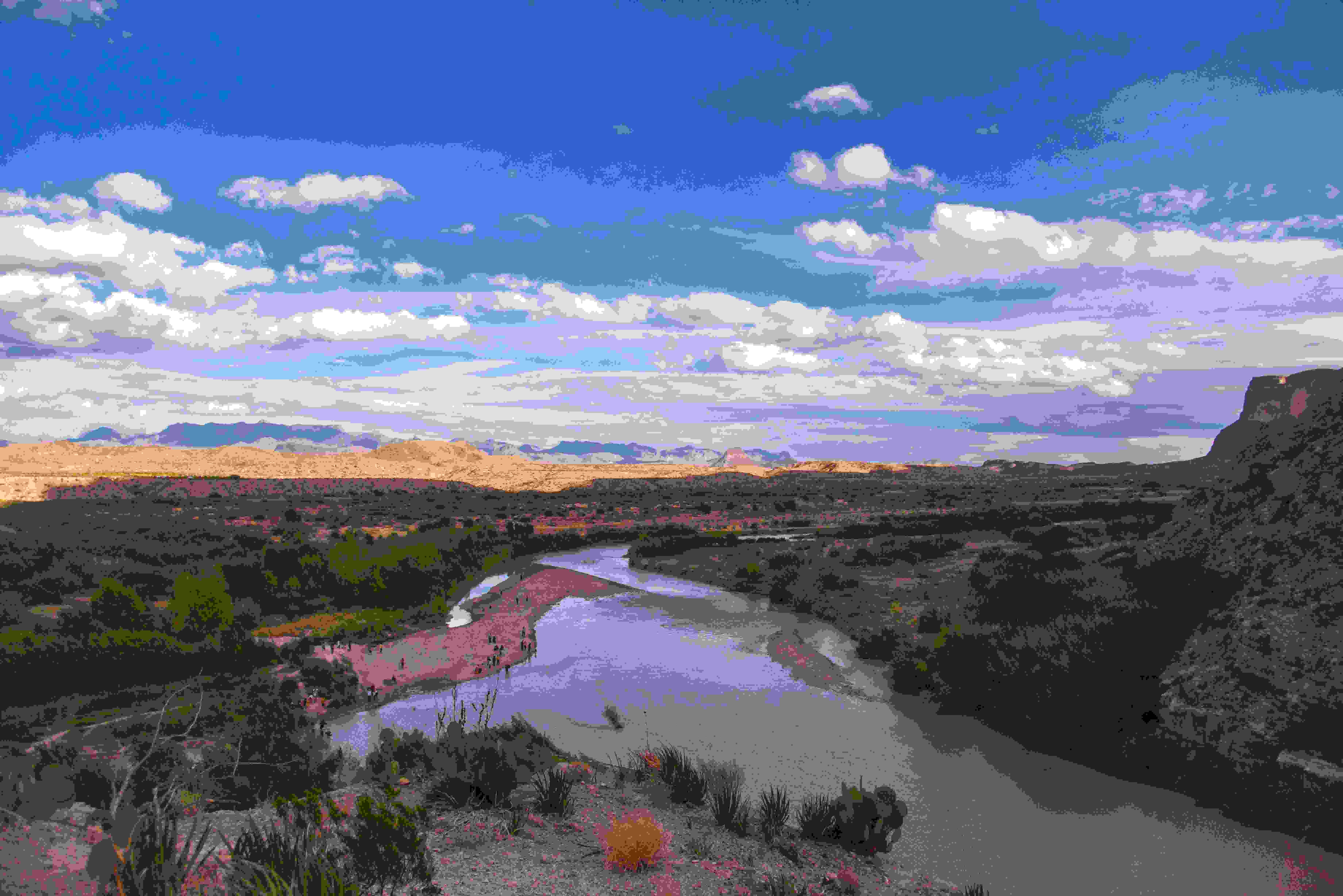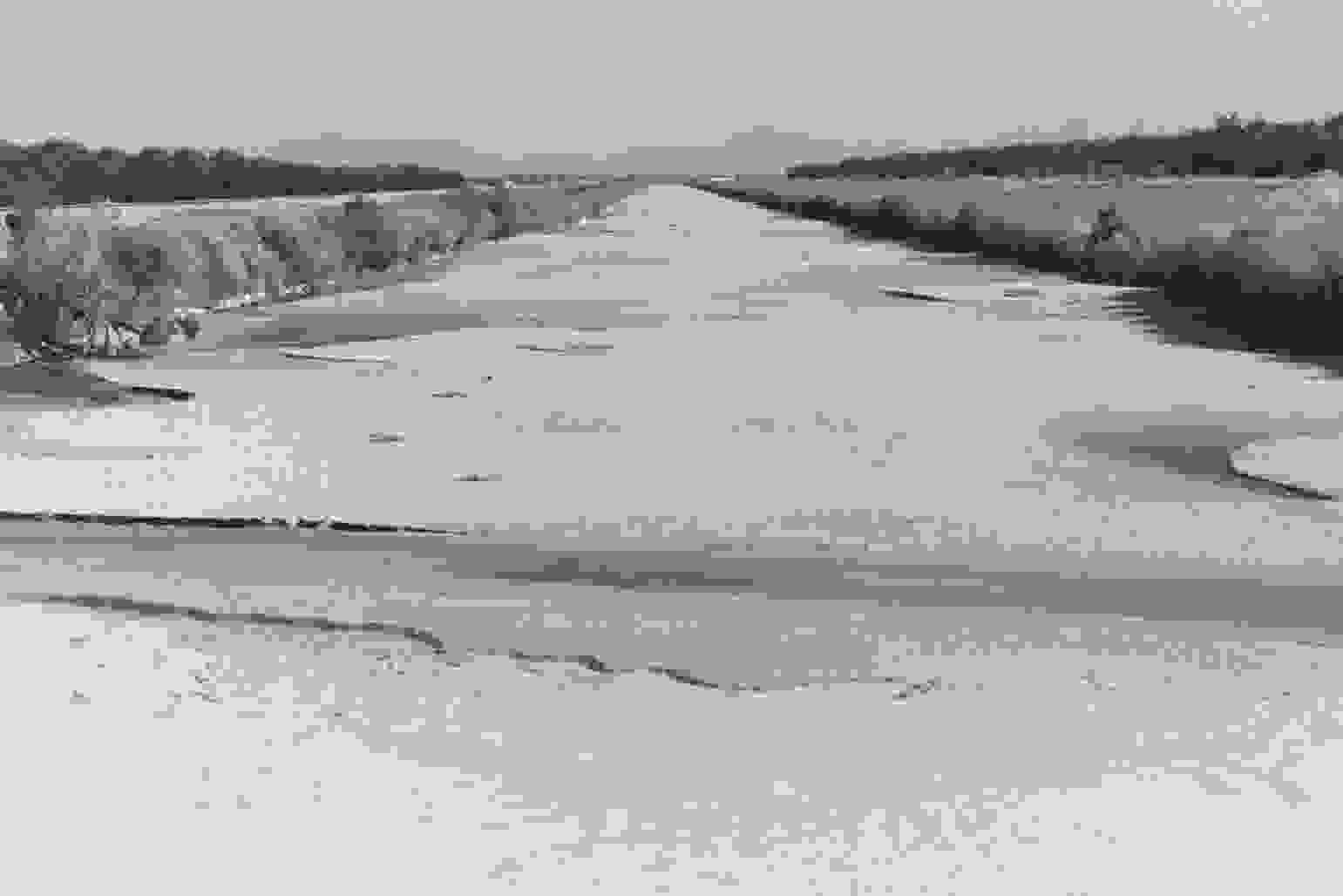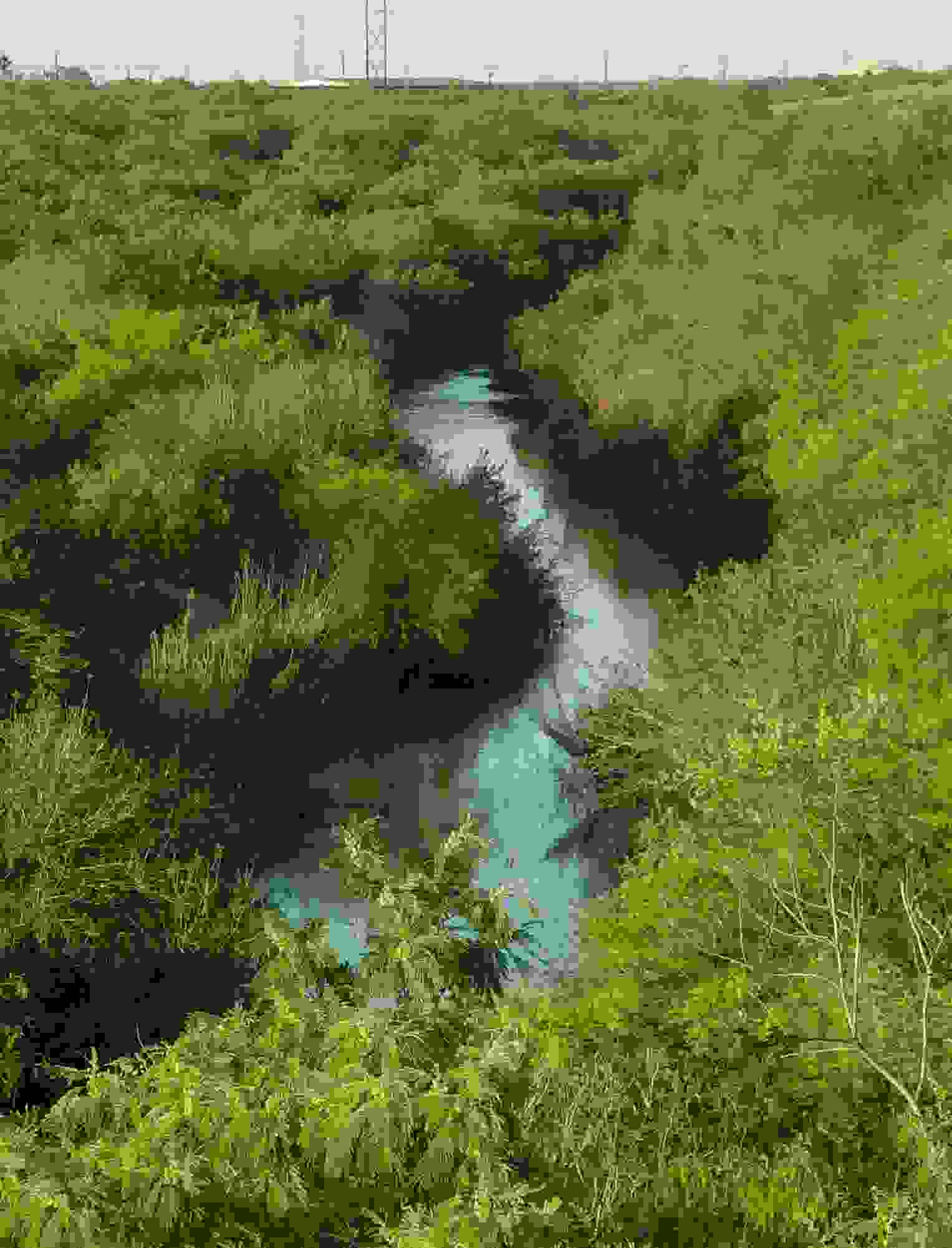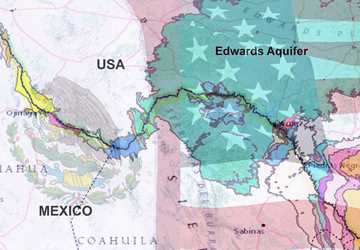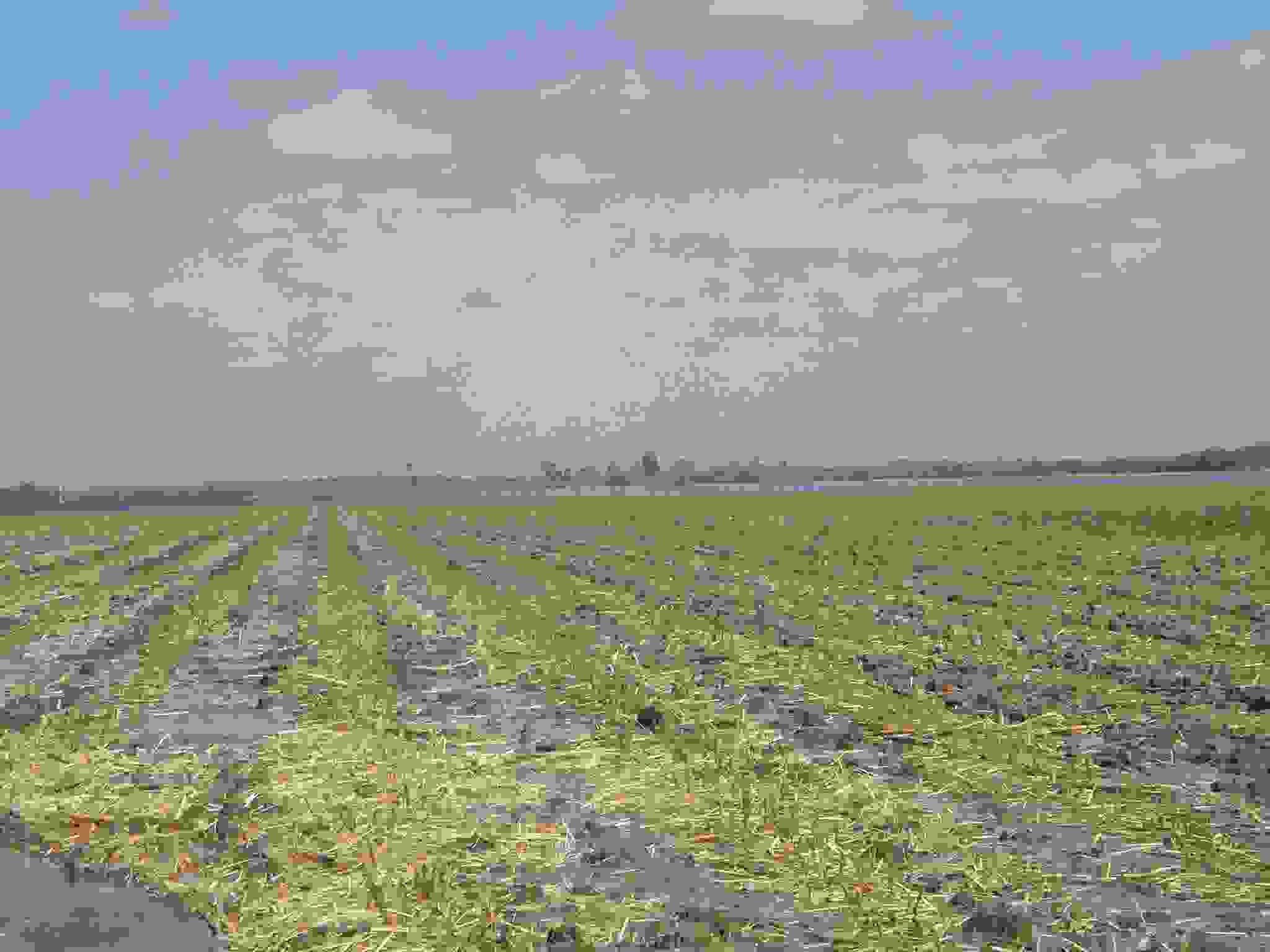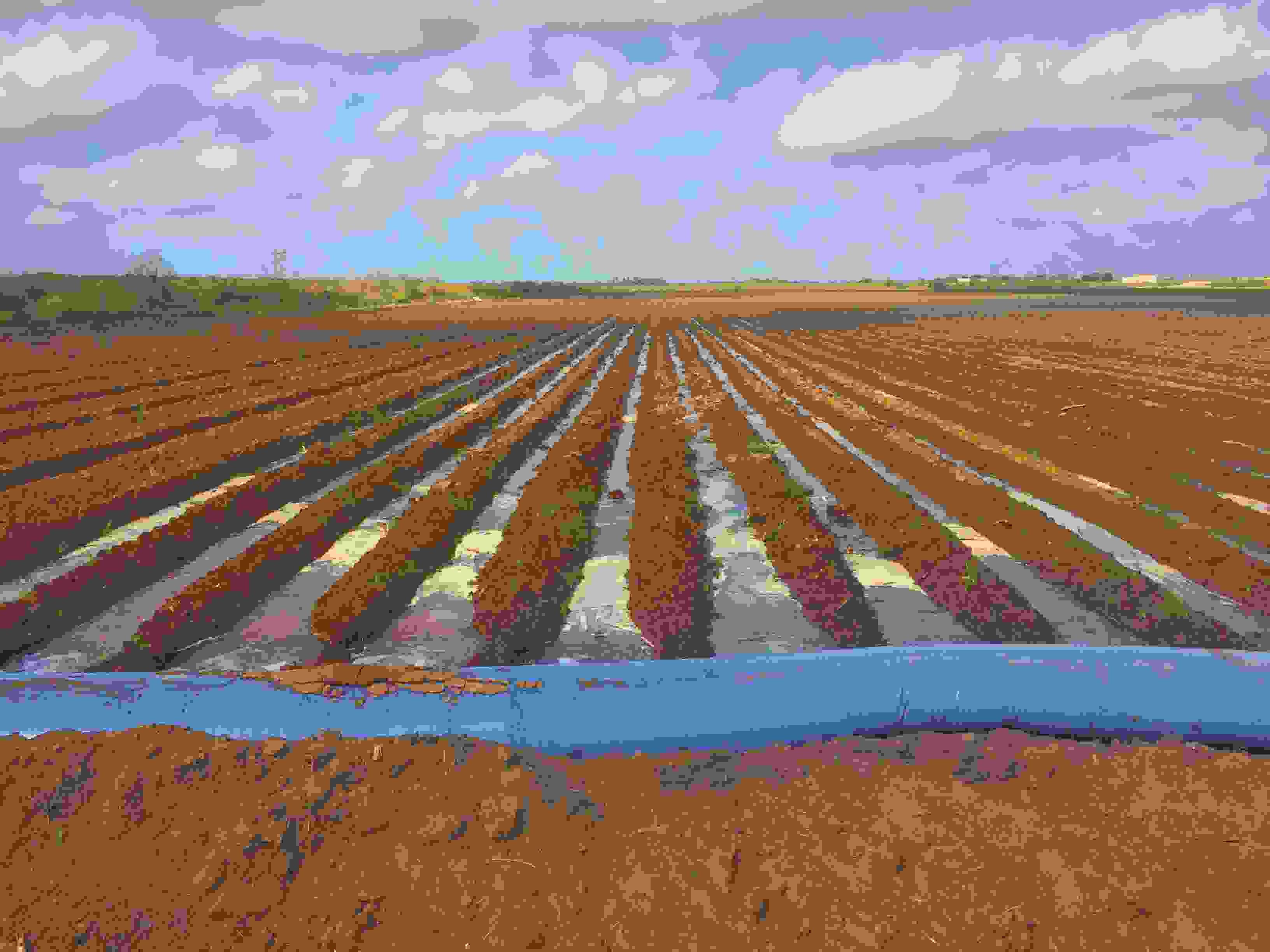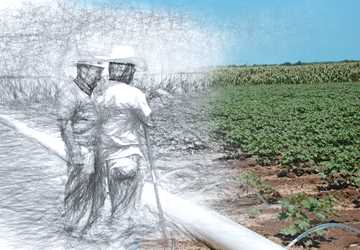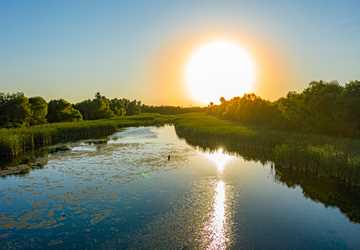When two countries are established, water does not stop flowing at the boundary between them. Its continuous stream circulates through the natural landscapes and ecosystems formed long before any countries were named.
As communities have developed along the border of the U.S. and Mexico over the years, treaties were created to apply boundary demarcation, national ownership of waters, sanitation efforts, water quality and flood control in the border region, according to the U.S. Section of the International Boundary and Water Commission.
With increasing populations, less frequent precipitation, intensifying droughts and extreme hurricane events in the border region, challenges such as water quality and water scarcity continue to grow.
In response to these and other challenges, a group of problem solvers created the Permanent Forum of Binational Waters to foster communication and collaboration efforts for the sustainability of binational waters. The group is a network of scientists, government officials, nongovernment organization members and citizens cooperating to understand all the parts of the binational water system.
How it all began
“As every other great idea, it started with a drink and a napkin,” said Rosario Sanchez, Ph.D., director of the Permanent Forum of Binational Waters and Texas A&M AgriLife Research senior research scientist at the Texas Water Resources Institute.
While talking with colleague Chris Scott, Ph.D., at the University of Arizona, about their different events and related water projects along the border, Sanchez said they began to realize how disconnected their work was.
Estimated reading time: 11 minutes
The unique Permanent Forum of Binational Waters is about strengthening relationships and connections among experts and stakeholders throughout the U.S.-Mexico border region.
More Information
- Permanent Forum of Binational Waters
- Water unites us: Permanent Forum of Binational Waters established
- Big groundwater issues to be addressed in online conference, coffee breaks
- Laying the groundwork for transboundary groundwater
Want to get txH20 delivered right to your inbox? Click to subscribe.
As every other great idea, the Permanent Forum of Binational Waters started with a drink and a napkin.
“We noticed that sometimes our binational cooperation efforts end up being isolated.”
She said binational communication about water-related challenges is one of the biggest struggles to overcome to make progress at a border-wide level.
“It was very rare that we communicated what we were doing, and then we said, ‘Well, why don’t we create a permanent forum?’ We should integrate our efforts to make bigger impacts,” Sanchez said.
Sanchez emphasized the need for a permanent forum to serve as an ongoing communication platform and not just one event a year where people tend to meet and then go back home without a plan to reconnect. She expressed a need for continuous communication between academics, public agencies, nongovernmental organizations and private institutions. A forum would allow collaborators to share what they are working on with each other, such as research updates, events, proposals and anything else that has to do with binational waters.
Sanchez invited Samuel Sandoval Solis, Ph.D., associate professor in the Department of Land, Air and Water Resources at the University of California, Davis and Cooperative Extension specialist in Water Management, to brainstorm about the project’s possibilities.
“He loved the idea,” Sanchez said. “He and his team gracefully joined the effort, and we started planning what to do.”
Building the network
To help connect the people working on water-related projects along nearly 2,000 miles of border lands, Sanchez, Sandoval and the growing team began developing a communication method to integrate border-wide collaboration.
“It’s really a big, huge problem to communicate successfully, to transmit a message and be able to move that message toward something bigger,” Sanchez said. “There are three big things that we aim to happen successfully under the umbrella of the forum. One is communication; two is a consequence of the first one, sharing information. The third is building trust.”
Without effective communication and information sharing, Sanchez said it is often not possible to move forward with any kind of project. “Those two elements give us the key for successful cooperation, which has to be based on trust. But to have trust, you have to engage and communicate. You have to know each other first. As basic as this sounds, it is where everything starts.”
Agreeing with Sanchez, Sandoval said, “We needed to have a place where information is not lost.”
Sanchez started sending emails to more colleagues she worked with along the border explaining the forum. The response was amazing.
“It started having this snowball effect of ‘Yes, please do it! We need this, we will support it,’ and the word started spreading all over the border with different academics and nongovernmental organizations. Anyone you could think of working on binational waters was totally into the idea,” Sanchez said.
There are three big things that we aim to happen successfully under the umbrella of the forum. One is communication; two is a consequence of the first one, sharing information. The third is building trust.
“We needed a place where a researcher or academic could come in and say, ‘Hey I’m looking for a person who is knowledgeable in A, B and C,’” Sandoval said.
People often need expertise and Sandoval said the problem is that they do not know where and who to look for.
“This network is that thing where they can actually go to look.”
With their collaborators, Sanchez and Sandoval named the project the Permanent Forum of Binational Waters and began creating a website.
One year later, Sanchez said there are now about 150 network members on the forum.
“We are communicating constantly and receiving a very good response. We have created a database with a network of people to find who you are interested in working with, to see what they are doing and their areas of expertise or their location.
“The network is an integration of experts, not just academics,” Sanchez said. “They became very interested and passionate in participating in the network.” She said their enthusiasm was a testament to the demand for this kind of network. “There was a gap in the binational waters narrative we weren’t addressing, and it was very much needed.” Sandoval agreed. “We have the people in the room, but just being in the room doesn’t mean things are going to change.”
The next step, he said, is to get the network members to work together and start generating synergy.
“We are trying to cooperate and build good relationships,” Sandoval said. “Right now, we have the room and the people and we’re trying to make the people work together.”
The socialization of science
The forum’s website includes a listing of the network members based on their expertise. The categories include the general fields of groundwater, surface water, wildlife, agriculture, social and economic systems and institutions and administrative systems. Experts can also be sorted by specialty categories, such as water quality, managed aquifer recharge, public policy, climate change and infrastructure development.
To encourage networking and more efficient communication, the network uses the Binational Waters Network to share information and resources. And because of their growing roster of purpose-driven conversation events, the forum members have developed a blog for their discussions.
The forum has also hosted virtual events via Zoom with great success. It hosted its first conference, the “U.S.-Mexico Transboundary Groundwater Conference: Where We Are and the Way Forward,” in October 2020. The theme of the conference was “Innovation and Creativity: Strategies for Unprecedented Challenges.” It was well attended with 140-150 participants the first day and 120 the second day.
Themed discussion Coffee Breaks are held monthly and are another example of how the forum is connecting. The theme of the August event was “Water Deliveries from Mexico to the U.S.: The 1944 Treaty and Conciliation Points,” and the September event’s theme was “U.S.-Mexico Transboundary Groundwater: Withdrawals and Binational Implications.”
The forum has planned another event series named Science Talks. The first Science Talk was in November 2020, titled “Women, Science and Water in the U.S.-Mexico Border.”
“In the water sector, we have made strides to increase gender equality among our scientific peers and we do not, by any means, have adequate representation in this case,” Sandoval said. “So how can you do that? Well, you start showing that it is possible. It is not that there are not good female scientists. It’s just that sometimes we don’t give them the microphone.”
Sanchez said the Science Talks present an opportunity to communicate new information, research and scientific developments in lay terms to the people who live in communities along the border.
In the water sector, we have made strides to increase gender equality among our scientific peers and we do not, by any means, have adequate representation in this case. It is not that there are not good female scientists. It’s just that sometimes we don’t give them the microphone.
“So the border communities will understand what we are doing. What are the new developments in science around the border, and what does that mean for them? How that science can actually be useful and applicable to the border. Why it’s important.”
In addition to communicating the science, Sandoval said the forum intends to have events that are as inclusive as possible with English and Spanish translations available to make the events truly binational. Inclusion also means giving everyone a voice at the table.
Sanchez said the participant turnout to the first conference was more evenly split between the U.S. and Mexico with the addition of professional translation services and the online format reducing usual participation barriers. “When you have an in-person conference, you usually get a lot of people from the host country, but with this conference, it was almost 50-50 in attendance.”
With such positive feedback from attendees, Sanchez said the Science Talks will also be available in English and Spanish.
Additionally, Sanchez said the Science Talks will be run by young people, “who have passion and strength and are very creative and hardworking people. They think about things that you usually hadn’t thought about and that can only come from a fresh mind.”
“I think that’s part of the success of the forum,” Sanchez said. “It’s really a mix of old people, me included, with really young people. We all have the same say, the same vote. That really has made a difference.”
Moving forward
For Sandoval, the next step for the forum is making the network a two-way street.
“We have a solid one-way street, and we’re building the infrastructure to have a two-way or a multiple-way street. That is in the mission: people communicating, fostering these groups and communicating with society, decision-makers, stakeholders and so on,” he said.
Sandoval said the two-way street must include stakeholder involvement. “We need people. We need to include the social component, the stakeholder engagement, the coproduction of science, having people from the beginning.”
An important part of communicating binational water sustainability includes reconnecting society, scientists and decision-makers back to the river, Sandoval said.
“Unfortunately, society has been disconnected from the food that we eat and the water that we drink. We do that every day when we turn on the faucet. Where is the water coming from? All of it comes from Mother Nature. It rains; it gets into the aquifers and the rivers and reservoirs, canals, pipes, treatment plants and back into the river.” Communicating, collaborating and implementing solutions cannot happen overnight.
“We’re going to need a lot of time,” Sandoval said. “That’s why the forum is important because we’re thinking of this as a long-lasting place.”
Sanchez agreed, likening the Permanent Forum of Binational Waters to building necessary infrastructure. “It’s building a network, a community, and you’re always going to need that, especially at the border, especially when it comes with water issues,” she said.
Building something permanent doesn’t happen on its own; it requires a community, and it takes community-focused work.
“This is a platform for everyone,” Sandoval said. “This is service. It’s all of us, and it is inclusive. So the last word or the key message here is that we’re building long-lasting bridges. This is good news. This is cooperation. This is a mutual understanding.”
“This is something that is only going to get bigger as long as we support it and as long as we lead the integrated effort with passionate people working behind the scenes,” Sanchez said. “That’s why our slogan is, ‘water unites us,’ because it really does.”
This is a platform for everyone. This is service. It’s all of us, and it is inclusive. So the last word or the key message here is that we’re building long-lasting bridges. This is good news. This is cooperation. This is a mutual understanding.
Explore this Issue
Authors
As a communications specialist for TWRI, Sarah Dormire works with the institute's communications team leading graphic design projects including TWRI News, flyers, brochures, reports, documents and other educational materials.

